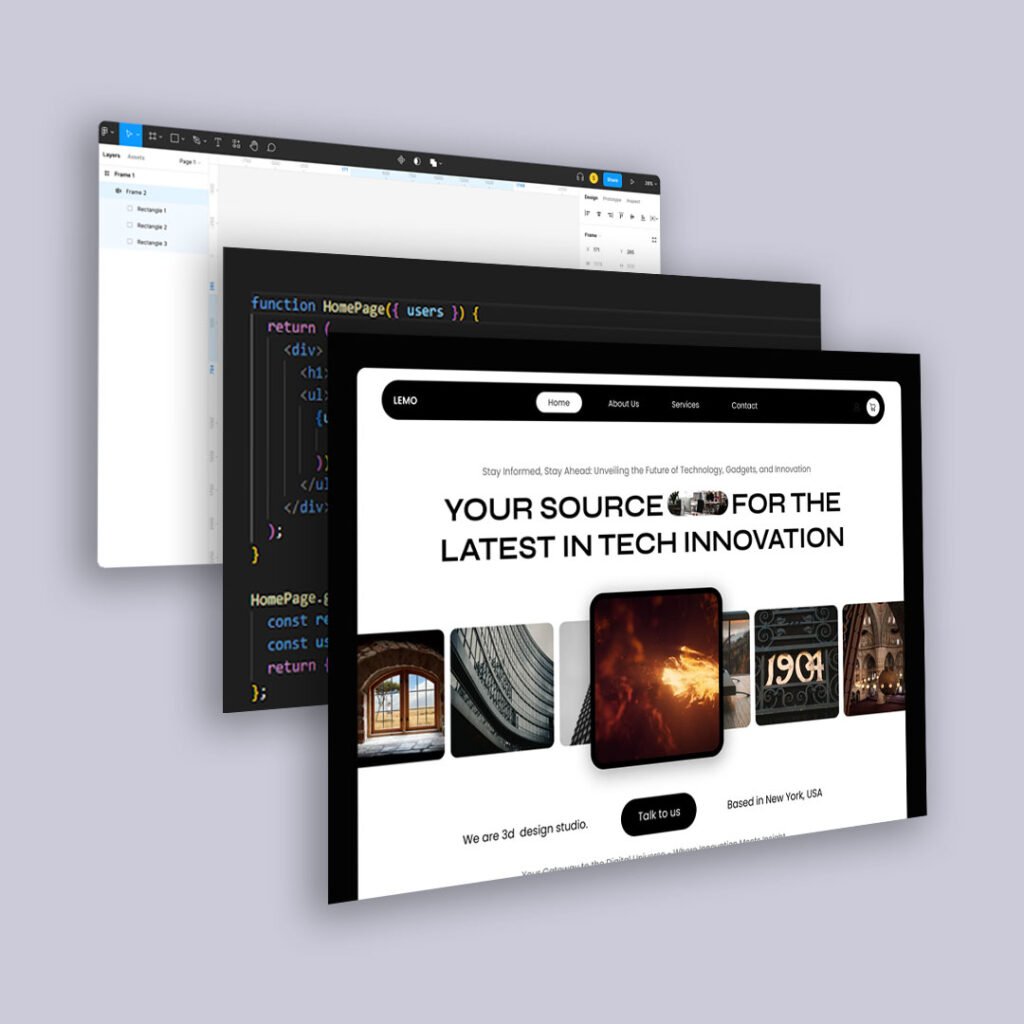What’s changing, why it affects revenue, and how to staff and measure for it.
Marketing in 2025 isn’t a bigger checklist; it’s a tighter loop. Search answers before anyone clicks. Social sells trust, not just reach. Budgets hold steady while expectations keep rising. AI speeds production and analysis, but only pays off when it shortens the path from insight to outcome. The playbook still works—just not the way it used to.
1) How is Google search changing—and how should marketers adapt?
Quick answer
Google increasingly resolves queries on the results page via AI Overviews and featured snippets. Treat SEO as “be the cited source,” not “rank #1.” Publish short, answerable pages for buyer-shaping questions, then mirror the same example and offer on your landing page. Expect fewer total clicks—but higher conversion on the visits you earn.
Type a question into Google and, more often than not, the answer sits on the results page: a snippet, an AI Overview, a checklist, a calculator. Clicks fall, but selling doesn’t stop—it starts earlier. Winners are the brands that get referenced in the answer box and then close when intent returns via branded search or a direct visit.
Marketing shift. More queries resolve on the SERP. The journey is “be the source → get remembered → convert on return.”
Business impact. Cited answers lift branded and direct traffic—the highest-converting visits in B2B and B2C. Because total clicks are down, your landing page must echo the SERP answer and make the next step obvious.
Team & measurement. Give this to an Entity & Experience lane (SEO + PR + CRO). Track Share of Answer across target queries, branded-search volume and conversion, direct conversion, and time-to-first action on companion landers.
Micro-FAQ
Q: What belongs in an answerable page? A 40–60 word canonical answer, one worked example, and clear markup.
Q: How does this show up in pipeline? More branded demos, more direct trials, faster time-to-first action on landing pages.
2) Budgets are flat—so where does growth come from?
Quick answer
When money holds steady but targets don’t, process is the edge. Standardize creative and landing patterns, pre-write test briefs, and automate reporting so each experiment reaches a decision sooner. More clean tests equals more winners per quarter—real incremental revenue without extra budget.
The teams pulling ahead aren’t working longer; they’re deciding faster. Playbooks beat one-offs. Weekly “ship or scrap” beats endless pilots. In B2B, that looks like testable value props by industry and role; in B2C, rapid creative and offer iteration by audience and placement.
Marketing shift. You won’t outspend; you’ll out-operate.
Business impact. Shorter time-to-decision compounds into more winning campaigns, higher conversion, and better payback.
Team & measurement. Stand up a Growth Ops pod (PM, analyst, CRO, lifecycle/ABM). Scoreboard: incremental revenue, payback period, time-to-learn.
Micro-FAQ
Q: How many tests per month is realistic? Two to four clean, decision-grade tests beat ten messy ones.
Q: Where do we start in B2B? Narrow ICP, two pains, two offers (demo vs. workshop), one landing framework—then iterate.
3) What’s the role of marketplaces and near-purchase surfaces?
Quick answer
Buyers increasingly complete journeys inside marketplaces and platforms: retail media networks for B2C, and in B2B, cloud/partner marketplaces (AWS, Azure, Salesforce), review sites (G2, Capterra), and procurement portals. Seed demand with content and creators, then capture it where purchase happens with offers, reviews, and precise targeting.
More decisions now happen “by the cart” or “by the listing.” In B2B, being easy to buy inside a cloud marketplace or well-ranked on G2 often beats another awareness campaign. In B2C, retail media sits next to checkout with SKU-level control.
Marketing shift. Discovery off-site; purchase in-platform.
Business impact. Higher intent and clearer attribution (SKU lift, new-to-brand in B2C; influenced opportunities, win rate, and deal velocity in B2B marketplaces).
Team & measurement. Appoint a Marketplaces lead. Track new-to-brand share and SKU lift for B2C; marketplace-sourced pipeline, ARR, and sales cycle reduction for B2B.
Micro-FAQ
Q: Best B2B quick win? Publish an approved listing with a frictionless “private offer” in your core cloud marketplace and map MDF to co-marketing.
Q: Best B2C quick win? Align creator bursts with in-platform promos and review pushes to lift new-to-brand units.
4) How should brands use social and creators to drive conversions?
Quick answer
Short video wins reach; decisions harden in comments, lives, DMs, and communities. Treat creators like editors and distributors. In B2B, think subject-matter creators, analysts, and operators on LinkedIn, YouTube, and niche forums. Repurpose top posts into paid to lift conversion on product pages, demos, and PDPs.
The new “social” is programming plus conversation. You earn the first glance with a native hook; you earn the sale by showing up where people ask follow-ups. For B2B, that could be a five-part LinkedIn series and a live teardown; for B2C, a creator mini-series and a Q&A stream.
Marketing shift. Discovery in feeds; conviction in communities.
Business impact. Creator proof lowers CPA and boosts conversion (demo, trial, add-to-cart, retailer PDP views).
Team & measurement. Build a Creator Desk. Track assisted conversions, view-through influence, list growth, demo/trial starts, and PDP lifts following creator waves.
Micro-FAQ
Q: One-off or series? Series. Treat each concept like a mini-show.
Q: B2B format that works now? Live product teardown with an operator-creator + a 10-minute “how we did it” follow-up on YouTube.
5) Does email still sell if opens are unreliable?
Quick answer
Yes—if it’s timely and specific. Privacy changes make opens noisy, so optimize for clicks, replies, purchases, and retention. Trigger sends from behavior (browse, feature interest, post-purchase/implementation education) and measure revenue per send and churn reduction.
Great email answers the exact question the buyer has right now. In B2B, think onboarding, integration recipes, ROI explainers by role. In B2C, think replenishment timing, sizing help, “what changed since you last bought.”
Marketing shift. Behavior beats broadcast.
Business impact. Fewer, smarter sends raise revenue per send and reduce unsubscribes/churn.
Team & measurement. Lifecycle/ABM owns revenue per send, reply rate, retained revenue, unsubscribes. In sales-adjacent flows, track meetings set and activated seats.
Micro-FAQ
Q: B2B quick win? A 3-part “integration unlocks” series targeted by stack (Salesforce, Snowflake, HubSpot).
Q: B2C quick win? A post-purchase series that teaches, recommends, and checks in at the right interval.
6) How should we measure performance with signal loss?
Quick answer
Pair lightweight marketing-mix modeling with a few clean tests (geo or holdout). MMM shows which channels move sales and profit; experiments validate platform claims. You don’t need perfect attribution—just reliable direction to reallocate with confidence.
Think “forest and trees.” Model the whole mix for direction; validate a couple of bets each month. For B2B, align with sales ops so opportunity creation, win rate, and deal velocity are first-class outcomes—not just MQLs.
Marketing shift. From perfect click paths to reliable portfolio reads.
Business impact. You cut pet spend, improve payback, and fund what actually moves revenue and pipeline.
Team & measurement. Add an MMM/Experimentation analyst. Publish one Incrementality Dashboard leaders can read at a glance: incremental revenue/pipeline, payback, and the month’s scale/tweak/stop decisions.
Micro-FAQ
Q: Fastest way to test a channel now? Geo split or audience holdout with clean controls and a pre-registered decision rule.
Q: What belongs on the one-page dashboard? Incremental revenue/pipeline, payback, and two sentences on what changes next month.
7) Where does AI actually create revenue in marketing?
Quick answer
AI pays when it compresses cycles. Use it to generate creative variants, synthesize messy data, draft briefs, and route leads—then reinvest saved hours into more experiments and selling time. Keep human QA where quality matters and track the time (and revenue/pipeline) gained from faster cycles.
Treat AI as throughput, not magic. In B2B, that means faster account research, personalization by role, and weekly competitive synthesis that actually changes outreach. In B2C, it means rapid creative iteration and onsite copy/testing velocity that a small team can manage.
Marketing shift. AI accelerates analysis, creative, and ops; value appears when cycle time falls.
Business impact. More testable ideas and more winners per quarter; faster sales responses and higher meeting rates in B2B.
Team & measurement. Create light guardrails (brand voice, disclaimers, QA gates). Track time-to-asset, time-to-insight, experiment velocity, incremental revenue/pipeline from scaled winners, and sales-assist metrics (meetings set, sequence reply rate).
Micro-FAQ
Q: One place to start tomorrow? Paid creative variants plus a human review rubric; SDR research summaries by account and role.
Q: What if throughput rises but results don’t? Change the hypothesis, not just the volume—your ideas, not your speed, are the bottleneck.
Your next 90 days
Publish one referenceable asset.
Make a mini study, benchmark, or calculator people and answer engines cite by name.
Impact: More branded demand and direct conversions (B2C) or more demo requests and sourced opportunities (B2B).
Harden the last mile.
Assume fewer organic clicks; treat every visit like it matters.
Impact: Higher conversion on pricing, trial, demo, and product pages; cleaner add-to-cart and checkout.
Stand up a Creator → Conversion combo.
Use creators to spark demand where people watch; capture it where they buy or book.
Impact: Lower CPA, higher demo/trial starts, better PDP engagement, more new-to-brand units.
Pair MMM with two clean tests.
Model the mix for direction; validate with one geo split and one audience holdout.
Impact: Confident reallocation toward channels that add revenue and pipeline sooner.
Operationalize AI where speed compounds.
Pick one creative job (variants) and one analysis job (weekly synthesis) to automate—with human review.
Impact: More experiments, faster decisions, more winners.
The throughline
Winning this year isn’t about mastering every new surface. It’s about compressing the distance between insight and outcome, earning mentions where decisions form, and protecting the moments you control—demo, trial, add-to-cart, checkout. Make something worth citing, convert the attention you earn, and prove it with incrementality, payback, and pipeline that closes.





